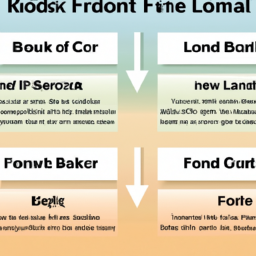Investing in fixed-income securities can be a great way to generate stable income, but there are certain risks associated with different types of fixed-income securities. One type of fixed-income security is the floating-rate bond. Floating-rate bonds have different risks than fixed-rate coupon bonds and it’s important to understand the differences before Investing.
Floating-rate bonds are bonds with a variable interest rate that is reset periodically, usually once a year or every six months. The interest rate on these bonds is usually tied to a benchmark such as the London Interbank Offered Rate (LIBOR), the Prime Rate, or the Federal Funds Rate. The rate is reset periodically, so the coupon payments will fluctuate with changes in the benchmark rate.
One of the main risks associated with floating-rate bonds is the risk of rising interest rate. When interest rate rise, the coupon payments on floating-rate bonds will also rise. This means that the bonds’ value can decrease if the coupon payments rise more than the market value of the bond. This is because investors will demand a higher return on their investment due to the higher coupon payments.
Another risk associated with floating-rate bonds is the risk of inflation. When inflation rises, the coupon payments on floating-rate bonds will also rise. This means that the bonds’ value can decrease if the coupon payments rise more than the market value of the bond due to the higher coupon payments. This is because investors will demand a higher return on their investment due to the higher coupon payments.
A third risk associated with floating-rate bonds is the risk of default. Floating-rate bonds are typically issued by lower-rated companies and have a higher risk of default than fixed-rate coupon bonds. This means that if the issuer of the bond defaults, the investor may not be repaid the full amount of their investment.
In comparison, fixed-rate coupon bonds tend to have less of these risks. Fixed-rate coupon bonds are usually issued by higher-rated companies, meaning they have a lower risk of default. Additionally, the coupon payments on fixed-rate coupon bonds are fixed, so they are not affected by changes in interest rate or inflation.
It is important to understand the risks associated with different types of fixed-income securities before Investing. Floating-rate bonds have different risks than fixed-rate coupon bonds, so it is important to understand the differences before Investing.
